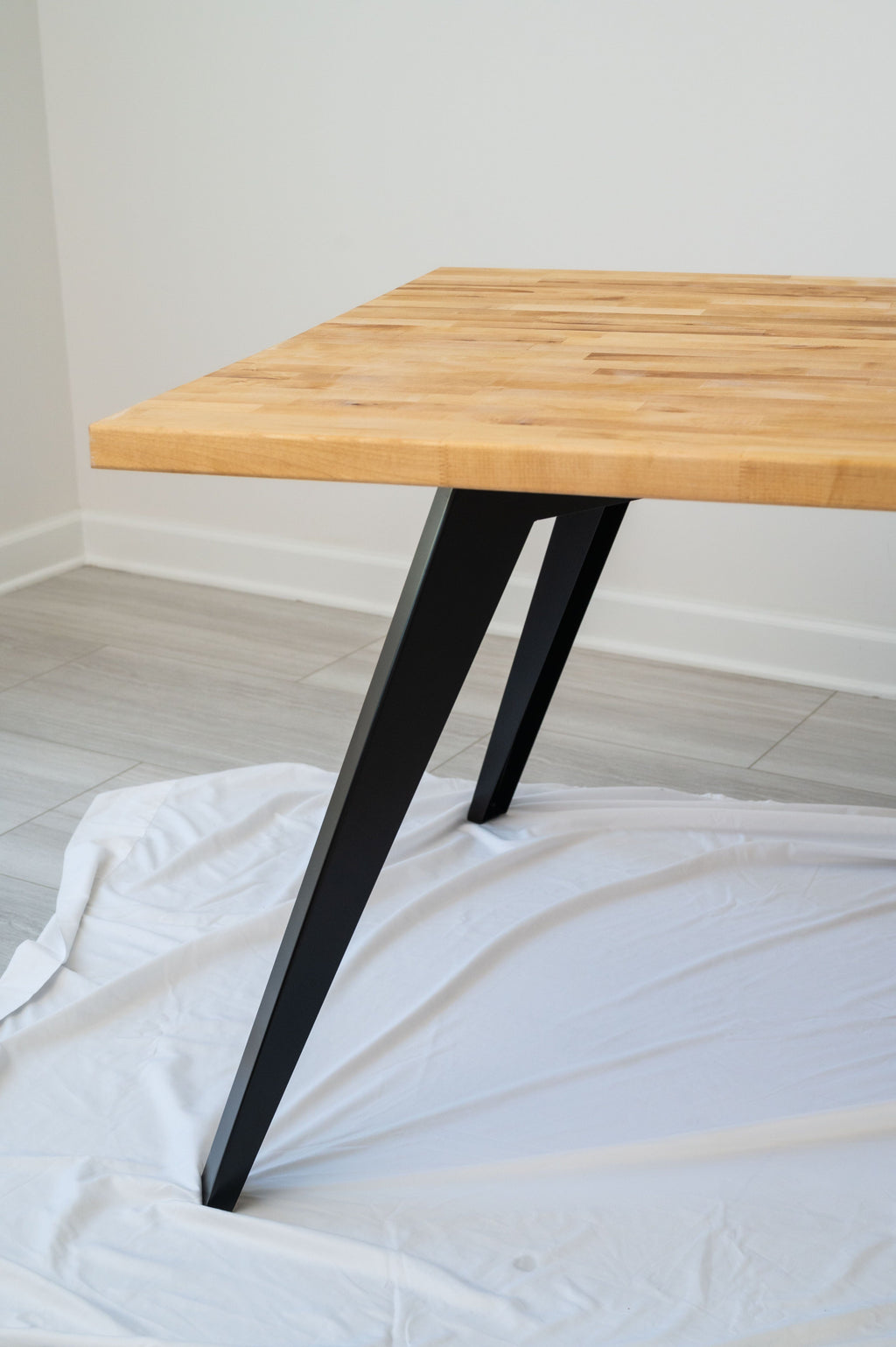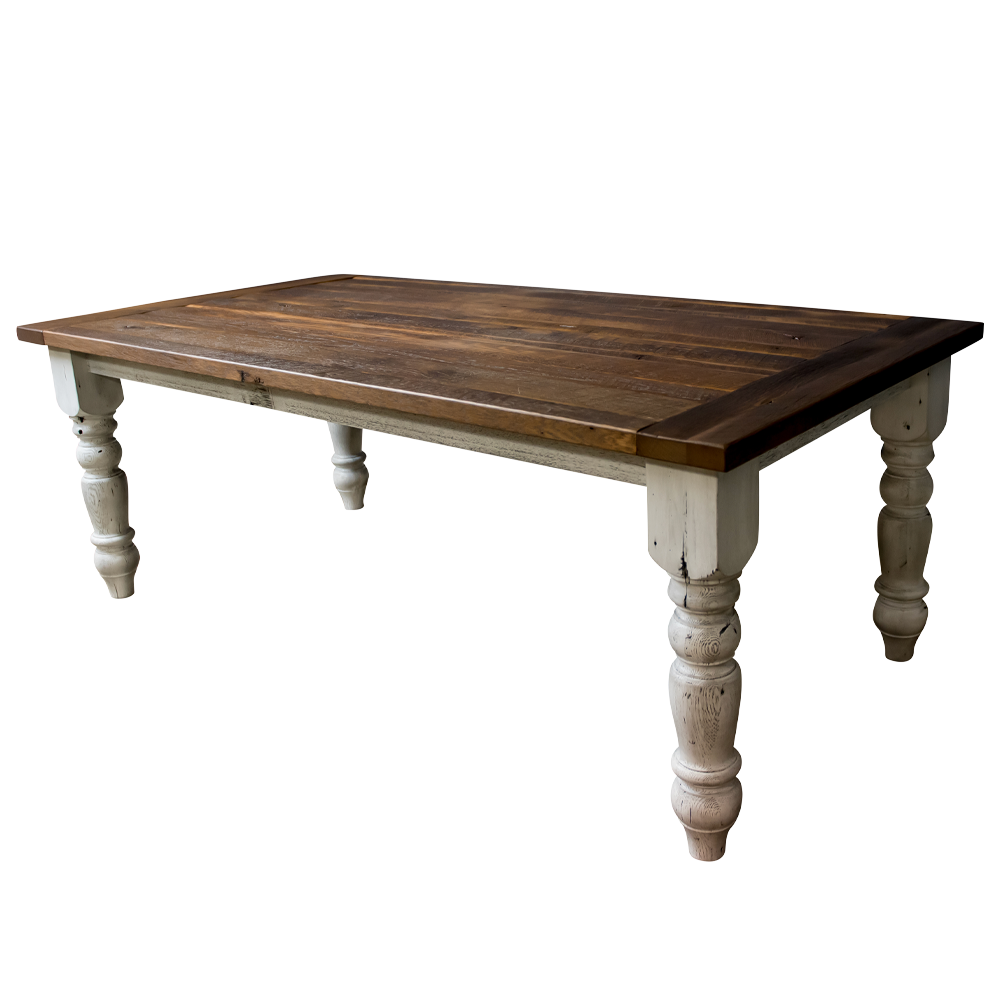Find Ageless Beauty in Handcrafted Dining Table Legs Wood Selections
Find Ageless Beauty in Handcrafted Dining Table Legs Wood Selections
Blog Article
Key Aspects to Bear In Mind for Dining Table Legs Timber Choices
When picking wood for dining table legs, several important factors require cautious consideration to make sure both functionality and visual appeal. The selection of wood kind, identified by its resilience and special grain patterns, plays a pivotal duty in the total layout and longevity of the item. Additionally, one have to contemplate upkeep needs and the ecological implications of sourcing products. As these elements intertwine, they significantly influence the last end result of your eating table. However, comprehending the subtleties of each aspect can be complicated, bring about essential decisions that warrant further expedition.
Wood Types and Features
When picking wood for dining table legs, it is necessary to recognize the unique attributes of various wood kinds. Different woods supply unique benefits and drawbacks, influencing both the resilience and aesthetic allure of the ended up product.
Hardwoods, such as oak, cherry, and maple, are typically chosen for their stamina and resistance to wear. Oak, known for its impressive longevity, also features a noticeable grain that can add character to the table. Maple offers a smooth surface area and is much less prone to warping, making it a dependable selection for functional furniture. Cherry wood, with its rich shade that grows gradually, supplies an elegant look yet might need even more maintenance to prevent scratches.
On the various other hand, softwoods like want and fir are extra affordable and less complicated to collaborate with, yet they are much less resilient than hardwoods. Pine is lightweight and features a warm, rustic appearance, making it a preferred option for informal dining settings. However, it is extra susceptible to scrapes and damages.
Understanding these attributes will certainly assist in making an informed decision to make certain the legs of the table satisfy both aesthetic and functional needs.
Grain Patterns and Appearance
The wood's grain is not merely a visual characteristic; it imparts an unique individuality and appeal to each item. Different timber species show distinct grain patterns, varying from the straight lines of maple to the elaborate swirls of oak and the striking number of walnut.
In addition, the alignment and scale of the grain can affect the perceived dimension and elegance of the table. Bigger, much more noticable grains might provide a vibrant, remarkable effect, while finer, subtler grains can produce a refined, underrated look. Furthermore, the ending up procedure can better boost these patterns, emphasizing the natural appeal of the wood and bringing out abundant colors.
Ultimately, the choice of grain pattern ought to balance with various other layout aspects, such as the tabletop and bordering furnishings, ensuring a natural aesthetic that raises the dining experience. Thoughtful choice of timber grain not only adds to the table's elegance however additionally mirrors the owner's preference and design.
Durability and Toughness
The toughness and toughness of table legs are vital factors to consider for ensuring longevity and stability in any dining space. Selecting the ideal wood is critical, as various varieties display varying levels of strength. Woods such as oak, cherry, and maple are frequently liked for their integral toughness and resistance to use. These products not just stand up to day-to-day usage however additionally support heavy lots, making them excellent for dining tables that frequently fit numerous diners. Dining Table Legs Wood.

Ultimately, buying premium timber and robust construction techniques will certainly generate a dining table that stands the examination of time, while supplying a trustworthy structure for plenty of dishes shared amongst family and buddies. Focusing on durability and strength guarantees that your table stays practical and visually pleasing for many years to come.
Upkeep and Care
Proper maintenance and treatment are important for preserving the resilience and strength of table legs made from wood. Routine cleaning is crucial; utilizing a soft, wet fabric guarantees that dust and debris do not build up, which can bring about scratches and dullness. It is suggested to stay clear of extreme chemicals or unpleasant products that might damage the coating.
Furthermore, applying a suitable timber gloss or wax regularly can help maintain the shine and protect the timber from dampness and spills. Nonetheless, it is essential to adhere to the supplier's suggestions regarding the kind of product to make use of, as specific surfaces might react adversely to specific chemicals.
Moisture and temperature level fluctuations can also affect wood table legs, triggering them to warp or crack. It's ideal to place the table far from straight sunshine and warm sources. Dealing with these immediately can protect against additional damages. if the table legs have any kind of scrapes or dents.
Last but not least, occasionally evaluating the joints and screws for rigidity is essential to preserve architectural stability (Dining Table Legs Wood). By sticking to these maintenance techniques, homeowners can ensure their wood table legs stay functional and appealing for several years to find
Environmental Considerations
When choosing wood for eating table legs, it's vital to take ecological factors to consider right into account. The sourcing and sustainability of timber are vital in reducing eco-friendly effect. Choosing for wood from licensed resources, such as those supported by the Woodland Stewardship Council (FSC), makes sure that the lumber is collected properly, advertising forest conservation Learn More Here and biodiversity.

Additionally, local sourcing of timber decreases transportation emissions, supporting neighborhood economies while lessening ecological effect. It is additionally advisable to more info here be familiar with the timber's treatment and completing procedures, as certain chemicals can be unsafe to both human health and wellness and the atmosphere. By prioritizing lasting wood selections, consumers can add to ecological preservation while taking pleasure in the sturdiness and beauty of their dining table legs.
Verdict
In verdict, selecting timber for eating table legs necessitates mindful consideration of different factors, including timber kinds, grain patterns, and toughness. Maintenance demands and ecological sustainability more impact timber options, highlighting the importance of sourcing from accredited or redeemed products.
When selecting timber for eating table legs, several important factors require mindful factor to consider to guarantee both capability and aesthetic charm.Correct maintenance and care are important Find Out More for protecting the durability and strength of dining table legs made from wood.When choosing timber for eating table legs, it's essential to take environmental considerations into account. By prioritizing lasting timber selections, customers can add to ecological conservation while enjoying the resilience and appeal of their dining table legs.
In final thought, choosing timber for dining table legs requires cautious consideration of different elements, including wood types, grain patterns, and resilience. Dining Table Legs Wood.
Report this page